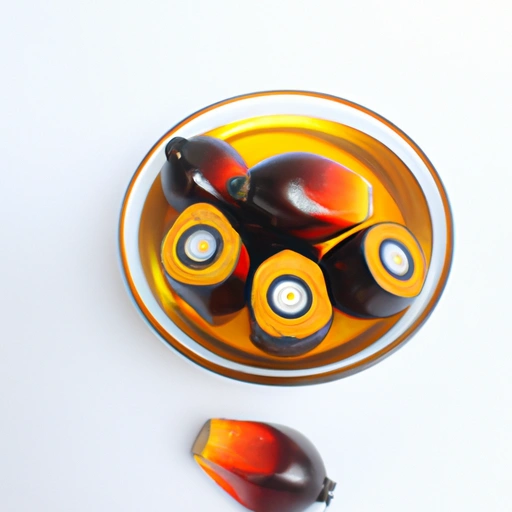Palm Oil
Description

Palm oil is a type of edible vegetable oil derived from the fruit of the oil palm tree, primarily the African oil palm Elaeis guineensis. It's distinguished by its reddish-orange hue, which is due to the high beta-carotene content. Palm oil is semi-solid at room temperature and can withstand high cooking temperatures, making it a popular choice for frying and baking.
Common uses
Palm oil is commonly used as cooking oil, in the production of margarine and shortening, and as a component in many processed foods. It is also found in non-food products such as soaps, detergents, and cosmetics.
Nutritional value
Calories
In one tablespoon (14 grams or approximately 0.5 oz) of palm oil, there are roughly 120 calories.
Protein
Palm oil contains negligible amounts of protein.
Fat
One tablespoon of palm oil has about 14 grams of fat, which includes 7 grams of saturated fat, 5 grams of monounsaturated fat, and 1.5 grams of polyunsaturated fat.
Carbohydrates
Palm oil does not contain carbohydrates.
Vitamins
Palm oil is a source of fat-soluble vitamins, particularly vitamins A and E.
Minerals
While not a significant source of minerals, palm oil does contain trace amounts of iron and potassium.
Health benefits
Palm oil is rich in tocotrienols, a form of vitamin E that has been shown to have antioxidant properties. The beta-carotene in palm oil also acts as an antioxidant and can be converted into vitamin A in the body, supporting vision and immune function.
Potential risks
Despite its nutritional properties, palm oil's high level of saturated fats can pose health risks by contributing to cardiovascular disease. The environmental impact of palm oil production, including deforestation and habitat destruction, also raises concerns.
Common recipes
Palm oil is used in a variety of recipes around the world, from African stews and soups to Southeast Asian curries and tropical desserts.
Cooking methods
Due to its high smoke point, palm oil is well-suited for frying and sautéing. It is also used in baking to create a tender texture in pastries and bread.
Pairing with other ingredients
Palm oil pairs well with robust spices and flavors such as chili, garlic, and ginger. It complements the taste of meats, seafood, and vegetables, making it a versatile ingredient in many dishes.
Summary
Palm oil is an essential component in various culinary traditions across the globe. Its unique properties and nutritional content make it a subject of interest for many food enthusiasts. However, consumers should be mindful of the health and environmental impacts associated with palm oil production and consumption.